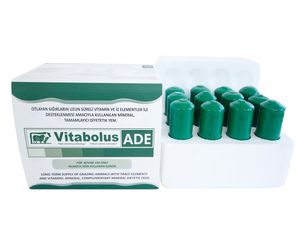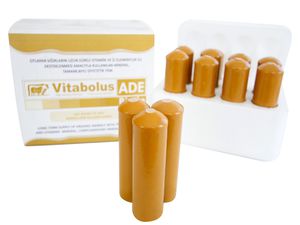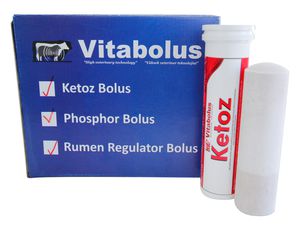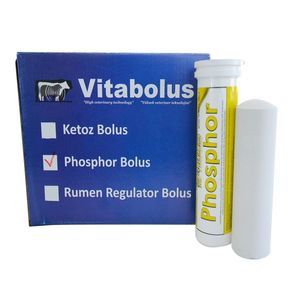
Calcium bolus Vitabolusnutritioncattlepost partum
Add to favorites
Compare this product
fo_shop_gate_exact_title
Characteristics
- Type
- nutrition
- Animal type
- cattle
- Use
- deficiency corrector, reduces the risk of milk fever, post partum
- Composition
- cobalt, vitamin, calcium, magnesium
Description
A dietary bolus diet used to reduce the risk of milk fever (fever or puerperal hypocalcemia) in cows.
How important is calcium for cows?
Milk fever is observed in 5% to 10% of cows. Milk fever affects cows especially during the 3rd or 4th lactation. Subclinical hypocalcemia (calcium deficiency without clinical symptoms) affects 30% of cows. Subclinical hypocalcemia is not recognized by producers and causes various metabolic diseases and postpartum problems such as mastitis (inflammation of the udder), displacement of the abomasum.
Large amounts of calcium pass from blood to milk just before and after birth. This condition causes a loss of appetite and a decrease in body temperature and muscle cramps caused by milk fever (hypocalcemia).
What is Vitabolus Calcium?
It is a combination of three types of calcium sources with different release rates (fast and slow), vitamin D3, which facilitates the absorption of calcium, and the combination of cobalt and vitamin B3, which are effective in regulating blood glucose after birth and increase appetite.
This combination prevents birth paralysis and has an impact on the liver to increase rumen activity, which increases blood glycaemia at birth.
Why use Vitabolus Calcium?
Vitabolus Calcium with three types of calcium sources (total calcium content of 47 grams per bolus, a combination of calcium sources dissolving rapidly and slowly in the blood), magnesium to increase the absorption of vitamin D3 (50,000 UI) and a perfect combination of vitamins and minerals to protect the liver and boost Rumen activity
Contributes to maintaining blood calcium levels in case of milk fever
Catalogs
No catalogs are available for this product.
See all of Royal İlaç‘s catalogsRelated Searches
- Animal nutritional supplement
- Nutritional supplement
- Solid feed supplement
- Mineral nutritional supplement
- Cattle nutritional supplement
- Vitamin nutritional supplement
- Digestion nutritional supplement
- Poultry nutritional supplement
- Deficiency corrector supplementary feed
- Supplementary feed for the immune system
- Protein nutritional supplement
- Feed additive
- Liquid nutritional supplement
- Reproduction nutritional supplement
- Powder nutritional supplement
- Amino acid feed supplement
- Sheep nutritional supplement
- Goat nutritional supplement
- Dry feed additive
- Licking block
*Prices are pre-tax. They exclude delivery charges and customs duties and do not include additional charges for installation or activation options. Prices are indicative only and may vary by country, with changes to the cost of raw materials and exchange rates.





